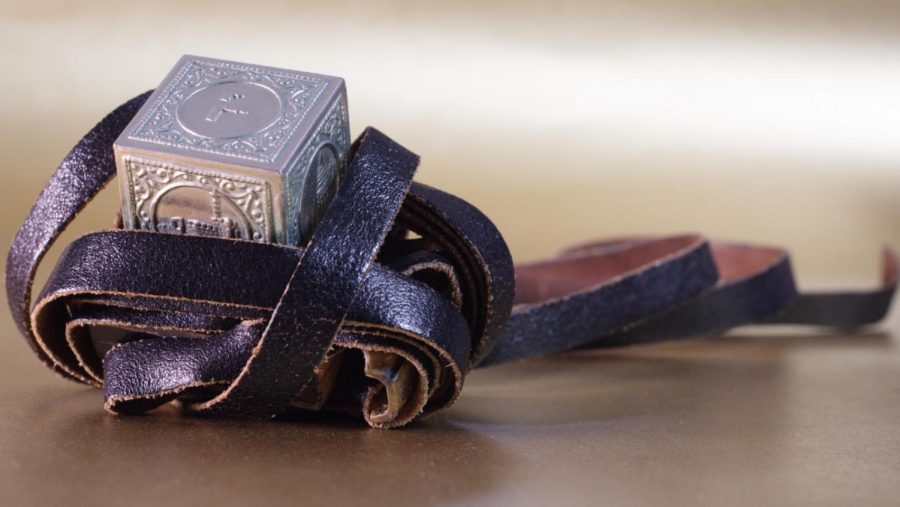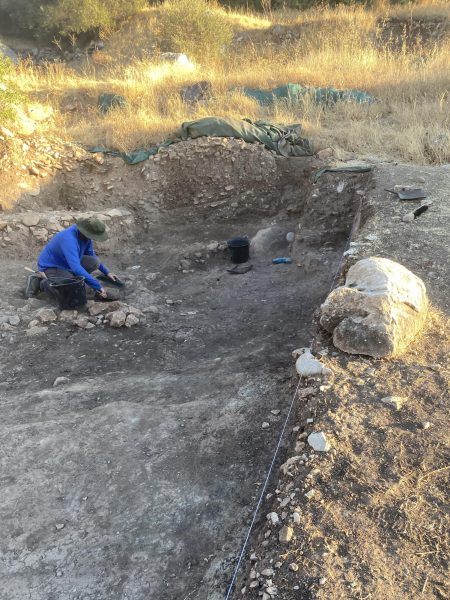Wrap Your Head Around This: Women and Tefillin at Ramaz
Since Ramaz is a Modern Orthodox yeshiva, many students assume that it is against school rules for female students and faculty to read from the Torah, wrap tefillin, or wear a tallit. In reality, however, Ramaz has officially permitted female students to practice these religious acts since 2014, when this debate last arose, according to Rabbi Schiowitz, who is the newly appointed Director of Judaic Studies and Religious life.
“[The debate did not arise] in response to a student but in response to a news reporter,” he said. “It was a bit controversial at the time.”
“If we were asked the question today — it’s 20 years later — we are in agreement that if a young woman wanted to put on tefillin and tallit, she could daven with us in our school minyan” said Rabbi Lookstein at the time.
Despite being permitted by the administration, very few women read from the Torah, wrap tefillin, or wear a tallit during school hours— which begs students and Ramaz community members alike to question why this cultural norm exists. A poll answered by Ramaz students seems to suggest that one reason why women do not outwardly practice is the school atmosphere. When asked whether they believed women should be able to read Torah, wrap tefillin, and wear a tallit at Ramaz, 54.2% of students said that they believe female students should be able to practice these religious customs and 45.8% said that they did not.
Although the majority of students who voted are supportive of women participating in these mitzvot, those who are opposed expressed their opinions more vocally in the poll. When asked why they were opposed to women practicing these mitzvot in school, some stated that since Ramaz is a Modern Orthodox yeshiva, the administration should therefore respect and enforce Orthodox traditions. To these anonymous students, allowing female students to participate in mitzvot only required for men would be considered disrespectful to such traditions.
On the flip side, some students who agreed with the notion that women should be allowed to practice “controversial” mitzvot argued that traditions should be questioned if there is no clear halachic prohibition on them. Many Orthodox rabbis are against women wearing tefillin and a tallit, including Rav Mordecai Willig שליט’א, who argued that doing so violates beged ish, the prohibition of women wearing men’s clothing and vise versa. But, surprisingly to some, others, including the Rambam, were in support of women practicing these mitzvot. Since there is no innate halachic prohibition on women reading Torah, wrapping Tefillin, or wearing Tallit, some argue that it should be up to the individual to decide whether they want to take part in these actions.
Ramaz is not the only Modern Orthodox institution where women wearing a tallit, tefillin, and reading Torah are considered controversial. Conversations like this one have been occurring in many areas of the Orthodox community. In fact, when Ramaz officially allowed female students and faculty to participate in such mitzvot, the decision was made in the context of Rabbi H. Lookstein publicly supporting Rabbi Harcsztark’s choice to permit it in his school, SAR High School, which is Modern Orthodox.
The Rampage interviewed some female students at Ramaz who wear tefillin/a tallit and read from the Torah. The students were asked if they felt comfortable doing so at Ramaz, and all of them answered that they were not. When asked why, one student responded, “I don’t think the Ramaz community would welcome me with open arms and I don’t think I could subject myself to that [backlash].”
Even though many well-known Modern Orthodox institutions officially support women taking part in these mitzvot, many women who usually would perform them still feel unwelcome doing so in Orthodox settings. Many students have pointed out that the feelings of unwelcomeness in the Ramaz community are valid, considering that there are students that vehemently express opposition towards women who put on tefillin or read from the Torah. Even though Ramaz officially supports female students’ choices, a large number of students and faculty strongly feel otherwise. In particular, there are Rabbis at Ramaz, which represent a source of religious authority, who do not agree that women should put on tefillin or read from the Torah. After being exposed to the environment at Ramaz, many students would agree that it is not Orthodoxy itself preventing these women from putting on tefillin and reading from the Torah: it is the atmosphere that exists, and that thrives upon the traditionally-minded students and faculty.



